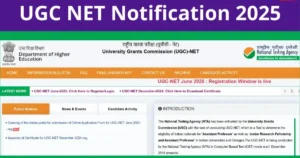Table of Contents
Auditing is done to ensure accurate financial statements and compliance with guidelines, instilling trust among stakeholders. This is one of the important topics to be asked in the UGC NET Commerce exam. Below we will discuss in detail the recent trends in auditing which include specialised audits like Management, Energy, Environment, System, and Safety Audits, addressing management efficacy, energy efficiency, environmental impact, system alignment, and workplace safety.
Trends in Auditing Overview
Auditing historical roots lie in validating spoken claims, but it has transformed into an assessment of written reports, ensuring financial accuracy and rule adherence. It establishes trust by offering stakeholders credible insights. These audits optimise management, energy, environmental practices, system efficiency, and workplace safety, enhancing operational excellence and trustworthiness.
Meaning of Auditing
Auditing originates from the Latin term “ Audire ”, which means “ to hear, ”- just as in ancient times adjudicators used to hear officers and people of authority to confirm the validity of their words. Over the time, the part of auditing evolved to vindicating written reports specifically, the fiscal records of individualities and businesses.
Auditing, or a fiscal inspection, is a sanctioned examination and verification of a business’s fiscal records. The main aim of auditing is to make sure that a company’s fiscal statements are accurate and follow nonsupervisory guidelines. Auditing also gives investors, creditors, and other stakeholders reasonable assurance that they can calculate a company and its integrity.
Recent Trends in Auditing
Recent auditing trends encompass specialized areas including management, energy, environmental, system, and safety audits. Management audits emphasize assessing management effectiveness across all levels and providing recommendations for improvement. Energy audits focus on optimizing energy usage and reducing costs, and environmental impact by identifying waste and inefficiency.
Environmental audits ensure compliance with regulations and sustainability goals. System audits rigorously examine planned arrangements and their effectiveness. Safety audits evaluate workplace health and safety systems, promoting compliance and improvements. These trends reflect the evolving auditing landscape in response to the multifaceted demands of modern businesses.
Management Audit
In accordance with Taylor and Perry, “management audit” refers to a methodology employed to assess the effectiveness of management across all levels within an organisation. This entails an independent evaluation of the business from the highest executive tier downward, aimed at determining the prevalence of effective management throughout the organisation. The outcome of this evaluation highlights the efficiency of management and offers recommendations for enhancing effectiveness in cases where improvements are needed.
Who performs Management Audits?
Management Operation is generally conducted by the hand of the company or by the independent adviser and concentrates on the critical evaluation of the operation as a whole rather than the appraisal of individuals.
Objectives of Management Audit
Identifying strengths and weaknesses within the organisation:
- To ensure optimum utilisation of human resources
- Suggesting alternatives, remedial and corrective measures pressing the factors affecting the organisation
Energy Audit
An energy audit is a regular analysis of energy use and energy consumption within a defined energy examination compass, in order to identify, quantify and report on the openings for better performance. It may include a process or system to reduce the quantum of energy input into the system without negatively affecting the affair.
Objective of Energy Audit
The objects of energy inspection can be explained compactly through the pointers below:
- Identify areas of energy waste: Energy checkups tend to identify areas where energy is wasted and identify ways to optimise energy operation.
- Determine energy effectiveness: Energy checkups help to determine the energy effectiveness of a structure, system, or process and identify areas where advancements can be made to increase effectiveness.
- Reduce energy consumption: The ultimate ideal of energy checkups is to reduce energy consumption by relating areas where energy can be saved, thereby saving money and reducing environmental impact.
- Assess outfit performance: Energy checkups also involve assessing outfit performance, similar to HVAC systems and lighting, and relating ways to optimise their performance and reduce energy operation.
Environment Audit
The International Chamber of Commerce (ICC, 1991) defines environmental auditing as,” an operation tool comprising a regular, proved, periodic and objective evaluation of how well environmental organisation, operation and outfit are performing with the end of contributing to securing the environment by-
- Easing operation control of environmental practices; and Assessing compliance with company programs, which would include meeting nonsupervisory conditions
Objectives of Environmental Audit
- To reduce exposure to pitfalls from environmental health and safety problems
- To corroborate compliance with applicable laws and regulations
Types of Environmental Checkups
There are three essential types of Environmental checkups that are mentioned below-
- Environmental Compliance Audit- The Environmental Compliance audit are authorised to review the aspirant company’s compliance measures, whether they’re being followed in agreement with the State and National rules and regulations established by the Government of India and if the compliance measures are fairly binding.
- Environmental Management Audits- The Environmental Management Audits help the aspirant company understand the procedure of operating their company in agreement with the Environmental Performance norms.
- Functional Environmental Audits- Functional Environmental audits are responsible for measuring the consequences of specific environmental pollution or hazards caused. This particular auditing is authorised for probing specific concern areas similar to the evaluation of the monitoring of the conservation of the air quality, waste operation, etc. Functional Environmental checkups are relatively infrequently conducted and are frequently included as a part of both Environmental Compliance Auditing and Environmental Management Auditing.
System Audit
It’s a methodical and independent examination to determine whether conditioning and related results misbehave with planned arrangements and whether those are enforced effectively. It’s an investigation to review the performance of a functional system.
Objectives of System Audit
The objectives of conducting a system audit are as follows −
- To compare factual and planned performance.
- To corroborate that the stated objects of the system are still valid in the current terrain. ideal estimate organisation system against certain norms
- Determine the effectiveness of the enforced system in meeting the specified ideal
- To meet the statutory and nonsupervisory conditions
Safety Audit
It’s a structured process whereby information is collected relating to the effectiveness, effectiveness and trustability of a company’s total health and safety operation system
A safety audit is a process that evaluates the health and safety of a work setting.
During an inspection, a group gathers data about a position’s operations. They identify hazards and illustrate how to make the area safer for workers.
Objectives of Safety Audit
- To demonstrate the operation’s fidelity to hand health and safety.
- Facilitate planned advancements to programs, policies and procedures.
Conclusion
Auditing is the process of reviewing and attesting your fiscal reports. Audits corroborate that you have created accurate and dependable fiscal reports and that no fraudulent conditioning is passing within the business. With the changing scenario, there come different advancements in auditing practices. Now this is not just confined to the limit of financial numbers but different qualitative aspects have become a major part of it.



 UGC NET Notification 2025 Out, Exam Date...
UGC NET Notification 2025 Out, Exam Date...
 Last Minute Preparation Tips for MP TET ...
Last Minute Preparation Tips for MP TET ...
 GAT B Cut Off 2025, Check Expected, Cate...
GAT B Cut Off 2025, Check Expected, Cate...














